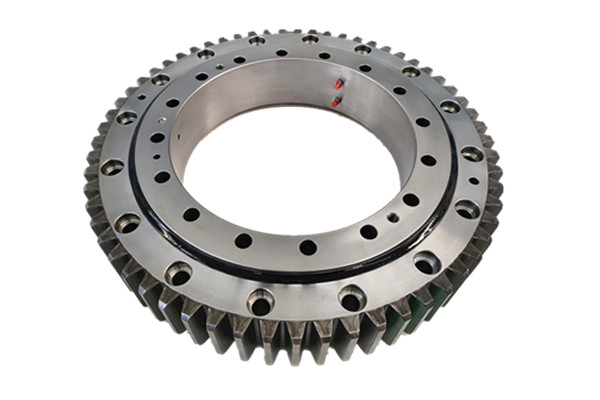A slewing bearing is nothing but a rotational rolling element bearing. It can accommodate oscillating or impact loading effectively. Due to the same reason, they are also known as slew rings.
Slewing bearings can handle high moment loads over a large rotational angle. They can also withstand large loads. As a result, you can often find slewing bearings in applications such as cranes and excavators. Moreover, you can also find them in applications such as solar trackers and wind turbines. If you are looking to incorporate slewing bearings into your design, contact a slewing bearing supplier.
Application Considerations
First, you need to understand the application requirements. What type of load and rotational movement is needed? Will it experience impact loading or vibration? What kind of operating environment will it be in? Defining these parameters will help narrow down options. Slewing bearings come in single-row, double-row, triple-row, and cross roller styles to accommodate different load capacities and bolt holes for mounting.
Load Calculations
You need to calculate all the relevant loads – deadweight loads, dynamic loads from operation, environmental loads like wind or seismic, shock loads from sudden stopping, etc. The bearing needs adequate static, dynamic, and moment load capacity to handle peak loads with a reasonable design safety factor. Catalog load values are usually based on a static load rating, so you may need to de-rate or upsize the bearing to account for other factors depending on the application.
Bearing Features
Consider special bearing features needed for your application. For example, an external gear teeth raceway to drive rotation versus a smooth inner/outer raceway profile. Also consider if you need corrosion resistance coatings, seals or protective covers to exclude contaminants, pre-lubrication, or special mounting bolt holes. Getting the right features upfront is important since custom bearings can be quite expensive.

Accuracy and Precision
Determine what kind of rotational accuracy or backlash is permissible, especially if used to position other components like in a solar tracking system. Consider whether standard commercial tolerances are adequate or if you need an enhanced precision bearing. This affects concentricity, runout, and ease of rotation. Precision bearings naturally cost more due to tighter manufacturing tolerances and quality control screening.
Environment and Operating Conditions
Evaluate temperature, humidity, vibration levels, shock loads and other environmental factors that could affect bearing life. Normal ambient conditions generally pose no issue but extremes of temperature, continuous vibration, and contamination by dust, water or chemicals can degrade lubrication and shorten service life substantially. Your expectations of maintenance intervals and overall lifespan need to align with the operating conditions.![]()
Installation and Maintenance
Review installation best practices to avoid damaging the bearing on insertion and removal which could compromise its reliability and performance. And assess maintenance needs – is lubrication, adjustment, or periodic inspection required? Bearings are built to handle some abuse but misalignment, improper lubrication or overload during installation can cause premature failure.
Brand Reputation and Warranty
A longer warranty from NSAR usually means a longer life expectancy and confidence in the product. For critical applications, the cost of a bearing failure can outweigh trying to save money upfront.
When choosing a slewing bearing, be sure to evaluate these key factors. You can then choose the most appropriate slewing bearing that will provide reliable performance. It is best to get in touch with the bearing manufacturer so that you can choose the best size and options.
Choosing NSAR
Now you know how to choose a slewing bearing. If you are planning to buy them, feel free to buy them from us at NSAR Bearings. Gather all the information about slewing bearings on the product page and then contact us to make your purchase.
Copyright © NSAR Bearings. All rights reserved. Privacy Policy